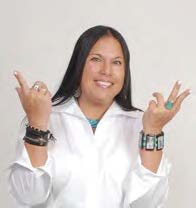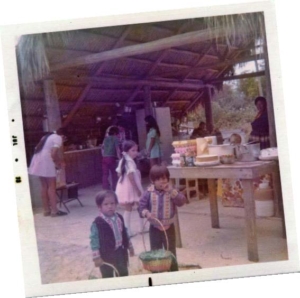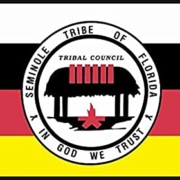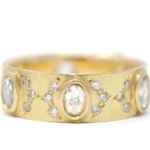Chickee Talk A Beacon to my Past…

Tina Osceola
Most people have childhood homes they can visit when they feel the desire to physically reconnect to a simpler time. My husband is from a very rural, remote town in northwestern Minnesota, named Grygla. Although his father passed on at the ripe old age of 101 years old, and his mother two years prior, almost to the day, when he visits Grygla, his childhood home is still standing. I enjoy seeing the melancholy expressions and the deep sighs that represent what he must feel when he reconnects to the place he grew up.
Unfortunately, my childhood home on Connecticut Avenue, in East Naples, was torn down years ago and in its place, is an empty lot. My grandparents’ village was like my second home and that too is no longer there… well almost not there. Following Hurricane Donna in 1960, my grandparents decided to move to Naples. They were no longer working the farms and had decided to move closer to town and build a Seminole Indian Village that the Southwest Florida residents and visitors could enjoy. My grandfather bought a little more than two acres in East Naples, right alongside a canal that led out to Hamilton Harbor.
 My cousin, Barbara, who was three years old at the time, remembers when the BIG move from Ochopee began. My grandparents had loaded the family up to go watch Mr. Leon McCormick use his earth moving equipment to clear the land so they could build their chickees. Mr. McCormick had come down off his loader to let my Grandfather know that they were stopping work for the day. President Kennedy had been shot. She remembers our grandparents built a little shelter with a tarp and they slept there on the ground until work began again.
My cousin, Barbara, who was three years old at the time, remembers when the BIG move from Ochopee began. My grandparents had loaded the family up to go watch Mr. Leon McCormick use his earth moving equipment to clear the land so they could build their chickees. Mr. McCormick had come down off his loader to let my Grandfather know that they were stopping work for the day. President Kennedy had been shot. She remembers our grandparents built a little shelter with a tarp and they slept there on the ground until work began again.
My Grandfather, Cory Osceola, wore many hats and did whatever needed to be done to take care of his family. He had worked in the bustling tourism trade as a young man at the turn of the century in Miami. He had worked as a foreman, running Seminole farm crews all across South Florida from
Ochopee to Homestead. He had a brief movie career and starred in such feature films as “Wind Across the Everglades” and “Distant Drums.” He was always an entrepreneur and also built chickee
huts for hotels, resorts and private residents. It was his job as a foreman, running a Seminole crew that logged cypress timber out of the Copeland area for Lee Tidewater Cypress Company that
would allow me to have one lasting memory to hold onto.
 One of his many jobs in Ochopee was to organize and guide Seminole workers to haul cypress logs out of the dense vegetation of the Fakahatchee. Today, if you’re driving east along Tamiami Trail towards Everglades City, about a mile before you get to SR 29, you can look to the north (your left) and will see the cypress hammocks. If you look close enough you will notice royal palms mixed into the vegetation. That was one of the forests that they would harvest centuries old cypress trees from. Well one day, he saw a young, royal palm that he thought would look great at his village in Ochopee. He worked hard to get that royal palm out of the Fakahatchee and back to his village. He survived and so did his palm tree. Hurricane Donna didn’t take down his tree, so he felt that he had to take it with him to his new village in Naples. He planted that royal palm outside by the side of the road.
One of his many jobs in Ochopee was to organize and guide Seminole workers to haul cypress logs out of the dense vegetation of the Fakahatchee. Today, if you’re driving east along Tamiami Trail towards Everglades City, about a mile before you get to SR 29, you can look to the north (your left) and will see the cypress hammocks. If you look close enough you will notice royal palms mixed into the vegetation. That was one of the forests that they would harvest centuries old cypress trees from. Well one day, he saw a young, royal palm that he thought would look great at his village in Ochopee. He worked hard to get that royal palm out of the Fakahatchee and back to his village. He survived and so did his palm tree. Hurricane Donna didn’t take down his tree, so he felt that he had to take it with him to his new village in Naples. He planted that royal palm outside by the side of the road.
When I was young, I remember using it as a landmark that we were getting close to the village after a long day away. As a young driver, I used that palm tree as my reminder to slow down because
I was going to have to turn soon. Now, at 53 years old, I’m using that royal palm tree as my last physical tie to a place that I knew I belonged. Every last remnant of what was once a crowded and
lively Seminole Village, was bulldozed and now there’s a Culver’s and the entrance to The Isles of Collier Preserve Sales Center. The royal palm is the tallest of all the others and it sticks out like a
beacon of what used to be.
Many people drive by that royal palm each and every day and they just see landscaping. To me that tree represents my family or most importantly, my Grandfather. I know where I come from
and how hard those who came before had to work and suffer, so that my life could be easier.




Leave a Reply
Want to join the discussion?Feel free to contribute!